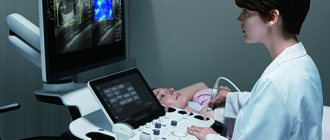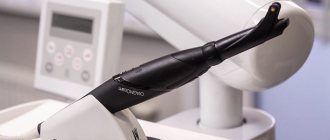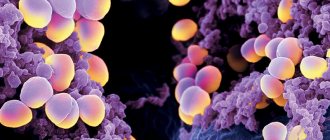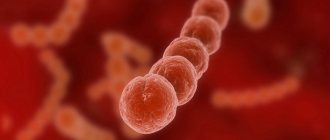General information about the study
A comprehensive examination of stool samples reveals eggs, cysts, and sometimes adults of all types of parasites. Recommended on a regular basis (1-2 times a year) for people in contact with domestic and wild animals, workers in farmland and wastewater treatment plants. It is important to conduct research on children due to their low level of hygiene.
To detect a parasitic infection, microscopic examination of stool is carried out using the native smear method, using the methods of Fulleborn, Kalantaryan, Krasilnikov. Due to the cyclical nature of the life of parasites, to exclude a false negative result, the test for helminths must be performed three times with a break of 3 to 5 days.
Where to get tested for STDs in Moscow
You can undergo a full (comprehensive) examination for STDs in Moscow at JSC “Family Doctor”. You can get tested at any of our clinics, choosing the one that is located in the area of Moscow you need. You can take tests on any day (including weekends and holidays). Based on the test results, gynecologists or urologists advise.
Sign up for diagnostics Do not self-medicate. Contact our specialists who will correctly diagnose and prescribe treatment.
Types of research
Native smear method
. The frequently used method, since it is the simplest, takes the least amount of time. But, it is not always effective, so it requires additional research to confirm a negative result. Excipient: a 1:1 mixture of glycine and water.
- Fulleborn method
. The method is the most informative. Allows you to identify eggs even in small quantities. Excipient: sodium chloride solution. The disadvantage is the duration of the test, more than 2 hours.
- Kalantaryan method
. The auxiliary substance is a solution of sodium nitrate, under the influence of which the eggs of all types of helminths float. You can get the result in 30 minutes.
- Krasilnikov method
. Excipient: detergent solution. The method allows you to identify eggs of all types of helminths. Their release occurs due to the active influence of surfactants. Depending on the equipment available, the result can be obtained in a few minutes or after a day.
You may need a general blood test and IgG antibodies. If parasitic infestation is detected, ultrasound, radiography, and microscopic examination of sputum are recommended. The results of these tests make it possible to determine the localization of helminths, the degree of intoxication of the body, and the presence of changes in internal organs.
Why do we need laboratory tests for helminths?
A set of laboratory tests is aimed at detecting eggs, larvae and adults. A positive stool test result allows the diagnosis of intestinal infestations and protozoal infections. Testing is also carried out to monitor the effectiveness of treatment and ascertain recovery.
Microscopic examination reveals the presence of parasites infecting the lower digestive tract. Regardless of the isolation method, the essence of the analysis comes down to studying the prepared biomaterial on a glass slide.
Collection of biomaterial
Many people are interested in what tests are done for sexually transmitted infections. Some of the most common are blood, urine, and smear tests. The doctor decides which test to prescribe on an individual basis in each case. This depends on the observed symptoms, the purpose of the tests and the patient's previous medical history.
- Biomaterial smear. It is taken by a doctor using a special instrument. For women, material is collected from the walls of the vagina, cervical canal or urethra. In men, a smear is taken from the urethral canal. Most often used for bacteriological culture.
- Deoxygenated blood. It is the main material for PCR and ELISA analyses.
- Urine serves as material for analysis using the PCR method (it is recommended to take the liquid directly to the laboratory in a sterile special container).
What helminths can be detected
A large number of parasite species can infect humans. Each of them has its own life cycle. For some, a person is an intermediate link, for others, the final owner. Most helminths have three stages of development: egg, larva or cyst, and adult. Among the most common parasites in Russia are pinworms, roundworms, liver flukes, tapeworms, bovine and pork tapeworms.
Enterobius vermicularis (pinworms)
The most common nematodes that parasitize the intestines. There are cases of pinworms getting into the vulva and vagina, which causes the disease vulvovaginitis. The most effective diagnostic method is morning scraping from the perianal folds. The analysis is used in differential diagnosis with other invasions and non-infectious diseases that cause similar symptoms.
Ascaris lumbricoides (Ascariasis)
The causative agent of the disease is roundworms, one of the most common helminth infections. Worms parasitize in the small intestine and reach a length of 25 cm. Eggs migrate throughout the body, in the blood and lymph flow, liver, trachea, and bronchi. Cause symptoms of general intoxication. Accumulations of roundworms lead to intestinal obstruction, peritonitis, pancreatitis, cholangitis, and liver abscesses. The accumulation of parasites in the esophagus and respiratory tract can cause asphyxia
Opistorchis felineus (Opisthorchiasis)
The disease is caused by flatworms - liver flukes or, as they are also called, cat flukes. They enter the body when eating fresh, poorly processed fish. They parasitize in the body of the final host, which can be a person, for up to 20 years.
They have a negative mechanical and toxic effect. In the process of movement, they violate the integrity of tissues, can block bile ducts, and impede blood circulation. As a result of their negative effects, bacterial infections, purulent cholangitis, and allergic reactions develop. Lack of treatment leads to cholangiocarcinoma, diffuse liver damage, and erosive and ulcerative gastroduodenitis.
Diphyllobothrium latum (Wide tapeworm)
The tapeworm enters the body through poorly processed fish and wild animal meat. Lives in the small intestine, causing the disease diphyllobothriasis. The parasite causes serious mechanical damage, causing disorders of the digestive system. May cause atrophy of certain sections of the intestine and obstruction. Long-term presence in the body leads to a lack of folic acid, B12-deficiency anemia. Can disrupt the functions of the stomach and other gastrointestinal organs.
If during migration the larvae enter internal organs and tissues, local inflammatory processes and fibrosis develop. In this case, the disease is called sparganosis. The lifespan of a worm reaches 25 years.
Taenia solium (Bovine and pork tapeworm)
Another rather dangerous parasite is the tapeworm, the final host of which is humans. Causes diseases such as cysticercosis (larvae live in the body) and taeniasis (an adult lives in the body). The length of the parasite can reach 3 meters. Life expectancy is more than 20 years.
The larvae can penetrate various human organs, muscles, eyes, and subcutaneous layers. When it enters the brain and/or central nervous system, neurocysticercosis develops. This is a common cause of epilepsy. The prolonged presence of the worm can lead to various neurological symptoms and can cause premature death.
The most common parasites in Russia are listed. However, a comprehensive analysis for helminths can detect other helminthic infestations.
When is the study ordered?
If you have the following symptoms:
- From the gastrointestinal tract - constipation and diarrhea, flatulence, bile stagnation, expressed as obstructive jaundice, abdominal pain, nausea, weight loss.
- From the respiratory system - dry cough, chest pain, sometimes hemoptysis, development of pneumonia.
- General symptoms include chronic fatigue, weakness, increased anxiety, irritability, sleep disturbance, spontaneous increase in body temperature.
Against the background of intoxication, allergic reactions occur in the form of urticaria and other types of rash, redness, and itching. Often cysts affect muscles and joints, which leads to local inflammation and pain symptoms. Anemia develops, lack of nutrients, and immunity decreases. The first signs of infection appear more often after 2 weeks, less often 1 - 2 months after infection.
When regularly screening individuals at risk:
- children, especially small ones with unvaccinated hygiene culture;
- persons in contact with animals (veterinarians, farmers, butchers, hunters, fishermen);
- people working on the land (gardeners, gardeners, agricultural workers);
- workers of sewage treatment plants and sanitation services.
- When registering children for kindergarten and other preschool and general education institutions. To obtain information for a children's camp or swimming pool. When receiving a voucher for sanatorium-resort treatment, when hospitalized in other medical organizations.
Indications for prescribing a urogenital smear
The test can be performed for preventive purposes when visiting a doctor every 6 months. A gynecological smear is also performed when:
- suspected vaginal dysbiosis.
Normally, the female genital organs are inhabited by many microorganisms. They create favorable conditions and protect them from pathogenic flora. Different types of healthy microflora are in balance with each other. However, a change in their quantitative ratio provokes its violation - dysbiosis. It occurs against the background of antibacterial therapy, hormonal disorders, non-compliance with diet and personal hygiene rules, wearing synthetic underwear, etc.; - suspected STIs
, as well as inflammatory diseases of the urogenital tract; - planning gynecological interventions.
A smear is performed before operations on the uterus, appendages, hysteroscopy, separate curettage of the uterine cavity and cervical canal; - differential diagnosis of the genital and genitourinary spheres
(colpitis and urethritis, cystitis); - the appearance of pathological discharge.
It is necessary to conduct a urogenital smear if a change in their color, consistency, volume, or smell is noted; - complex diagnostics of pregnant women.
The study will be required upon registration, as well as at 30 and 37 obstetric weeks. It is also carried out during medical termination of pregnancy.
Preparing for the study
Biomaterial is collected in the morning. It is necessary to exclude the ingress of foreign substances: water, urine, genital secretions. For analysis of helminths, freshly isolated feces are required. Storage is allowed, but not more than 24 hours at a temperature of +2... +8 C. A smear-imprint from the perianal folds is performed before defecation, urination, and washing.
It is recommended to avoid taking laxatives 3 days before collecting biomaterials. In consultation with your doctor, you should reduce or stop taking medications that affect intestinal motility and stool color.
Prevention of helminthiasis
It is important to undergo examination when the first symptoms of helminthic infestation appear. Parasites are extremely dangerous to human health. Can lead to the development of serious diseases. Children experience growth retardation and the absorption of nutrients is disrupted. Infection during pregnancy increases the manifestation of toxicosis. There is a risk of the parasite penetrating the placenta. It can damage the fetus and cause miscarriage.
You can protect yourself by following simple hygiene standards. Wash your hands, vegetables, and fruits thoroughly. Follow the rules of food preparation, exclude from the diet meat and fish that have not passed sanitary control. Drink only purified water, not directly from natural sources. Latrine areas must be equipped with disinfection systems so as not to contaminate the soil. Pets must undergo veterinary control regularly.
References
- Simonova, E.V., Ponomareva, O.A. The role of normal microflora in maintaining human health. Sib. honey. zhurn., 2008. - No. 8.
- Chernova, N.I., Perlamutrov, Yu.N., Petrova, I.S. Diagnosis and treatment of vaginal microbiome disorders: is it that simple? Gynecology, 2014. - No. 4.
- Korotyaev, A.I. Medical microbiology, immunology and virology. - SPB: Special. lit., 1998. - 580 p.
- Nelyubova, O.I., Talnikova, E.E., Morrison, A.V. Skin microbiome and its role in normal and pathological conditions. Russian Journal of Skin and Venereal Diseases, 2021. - No. 2.











